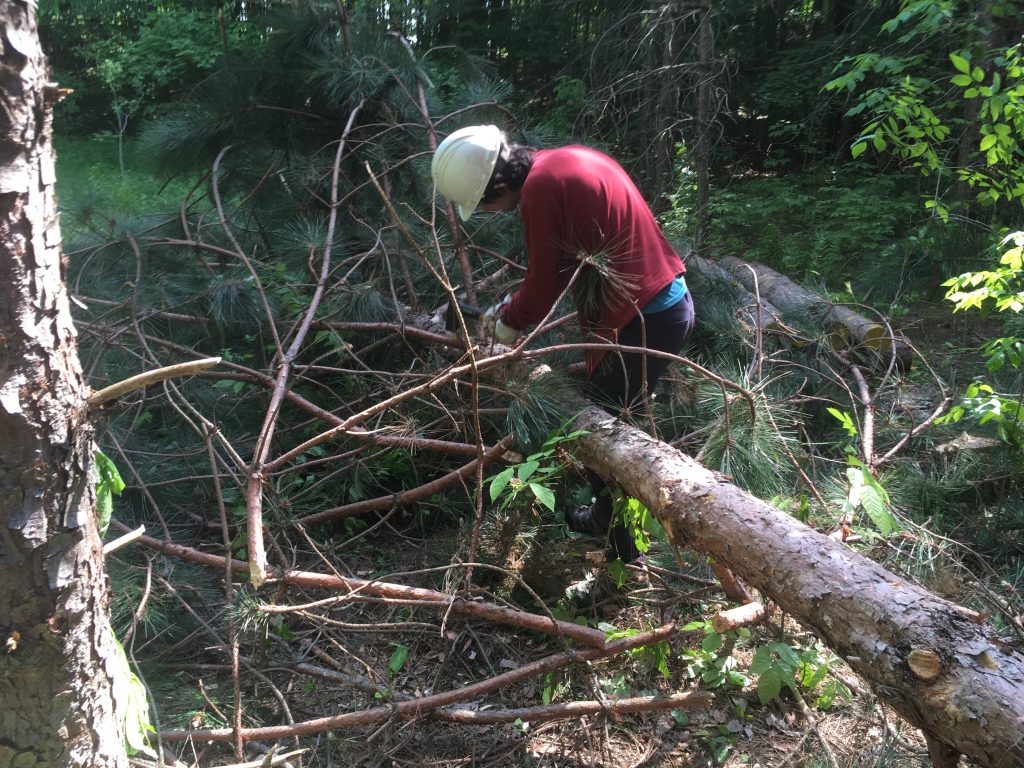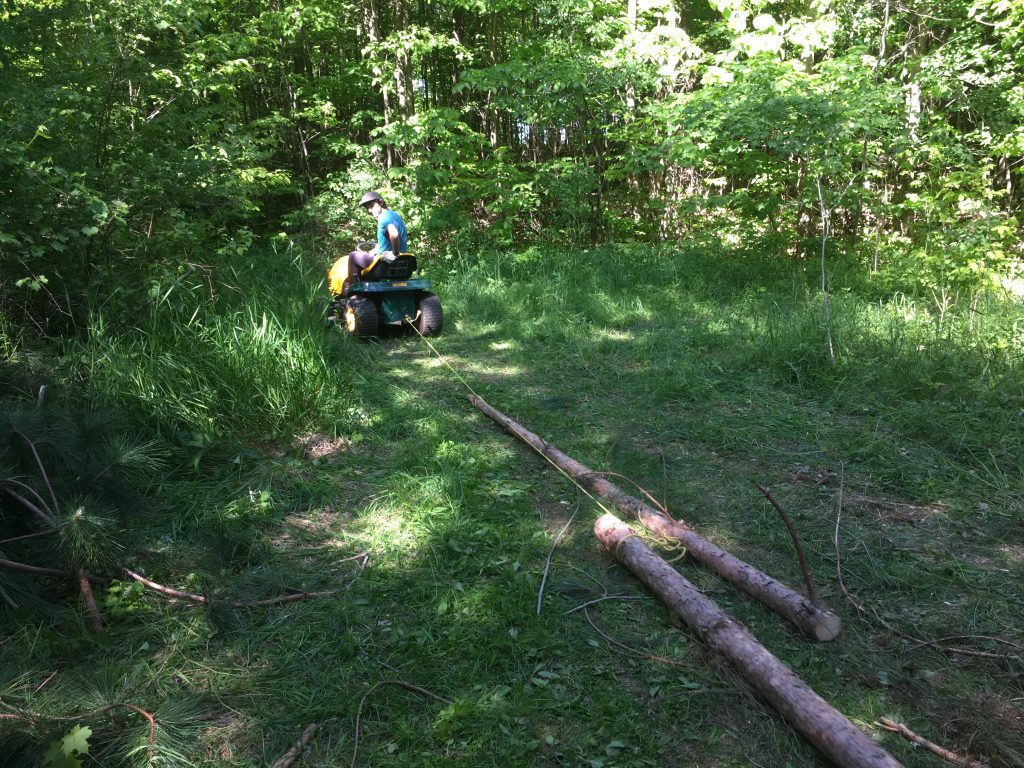
I’ve been studying forestry for awhile now. I even write managed forest plans and I am a registered professional forester in training.
I graduated from the University of Toronto with a Master of Forest Conservation, with straight As. But I learned the other day that I have little ability in one basic detail of forestry: how to cut down a tree.
In our silviculture class with Dr. Sean Thomas, we visited a red pine plantation in Durham region, east of Toronto. For over a century foresters have prescribed red pine as a tree that will jump-start conversion of marginal farmland back into woodland. So there are a heck of a lot of these red pine plantations around, and the province has lots of material online about how to thin the plantations. I measured the trees and wrote a paper with a simple prescription: thin the forest.
A forest resembles a carrot patch. You plant a whole bunch of seeds. After awhile you have to thin some out so the rest will grow big.
Red pine needs thinning after about 25 years. The Ontario Extension Note, Managing Red Pine Plantations, reads, “Young trees with adequate spacing develop more foliage and thicker branches than crowded trees….Depending on the original spacing, approximately 30 per cent of the stems should be removed in the first thinning.”
Foresters suggest that you cut out trees in this first thinning that have a split trunk or some other defect — the less attractive trees — so the remaining forest will grow in value. The neighbours who sold us our farm planted red pine in 1995 — it is ready to thin. Early one morning I blithely skipped through the plantation with my can of orange paint and marked some trees to cut.
Easy enough right? Fire up your chainsaw, and cut down one in three trees. But here’s the problem: when you cut down a red pine in a plantation, it does not fall.
It just stands there, taunting you. Its upper branches, which resemble huge bottle brushes, remain inextricably intertwined with all the red pine nearby. It’s a bit daunting because the tree weighs hundreds of kilograms and could kill you if it ever did fall.
My son and I cut the first tree. It did not fall. We called our neighbour, Gunter. He tied a chain to his tractor, and pulled it down. But then he gave us a bit of a wry grin. He is 89.
“I think you should give up,” he said. Translation; I am not your unpaid saviour.

So we got smart. My son climbed Tree No. 2 and tied a rope halfway up. We looped the rope around an adjoining tree, and tied the other end to our Yardman lawn tractor. We steered the tractor to 90 degrees from where the tree would fall. I cut the tree, and my son gunned the tractor, and the tree fell.
We cut the log into 9′ lengths; Shane Mumby is coming in a couple of weeks with his portable mill to make them into planks.
Then we hit our next challenge. The tractor was too small to tug the log out of the bush. We cut a shorter piece of log and put it under the log, at 90 degrees, and rolled the main log on the smaller log. I had to move the smaller log every 9′ as we slowly inched our prize out of the forest.
Later we sat with Gunter and Elsa, his wife, on their porch and recounted our adventures.
“You guys have gone back to the Stone Age,” Gunter laughed. True. And we thinned our forest a bit. Who knows? Some day some of those trees left over may grow up to be hydro poles. From the Stone Age all the way to modern times. Not bad.

